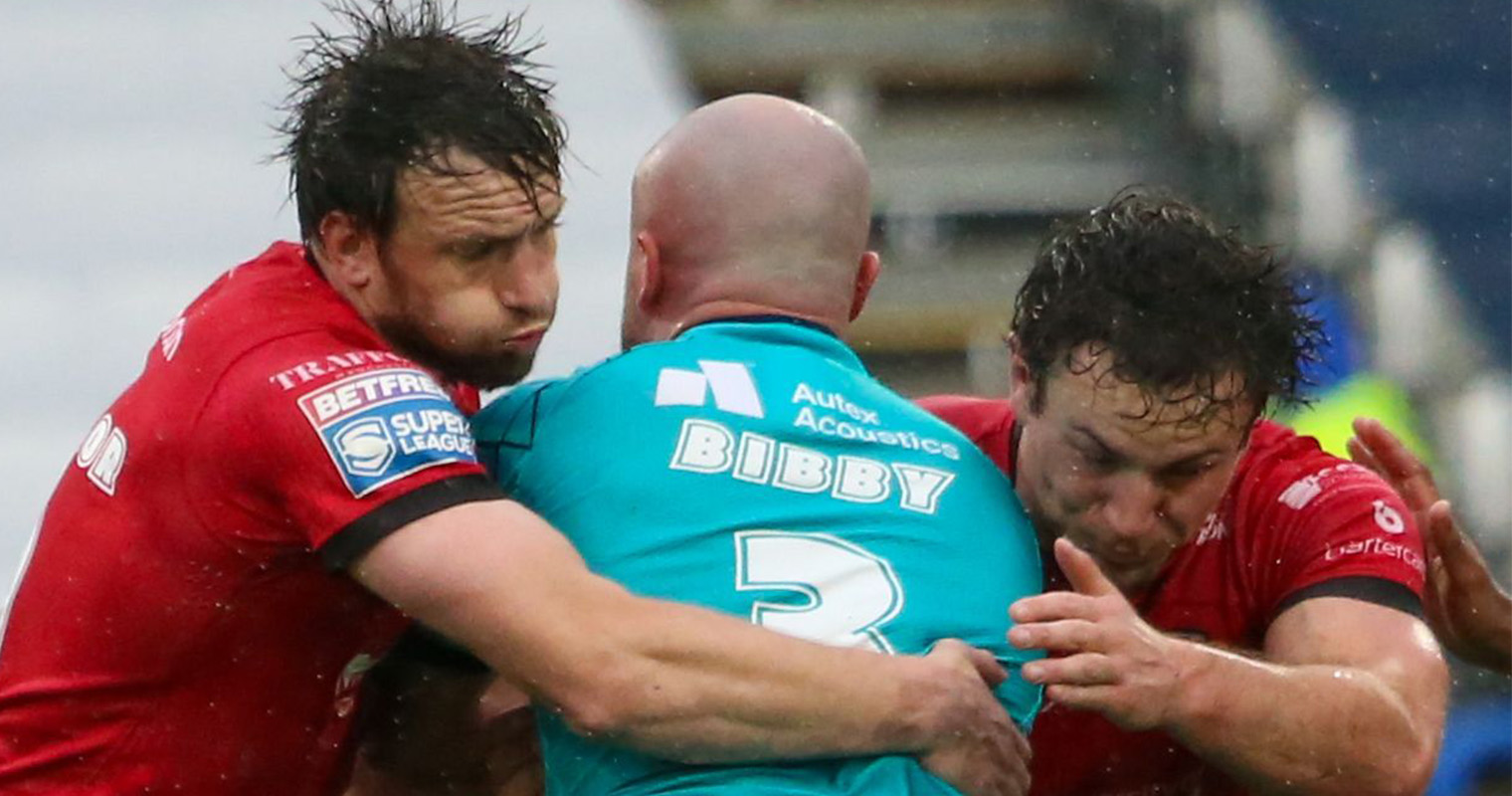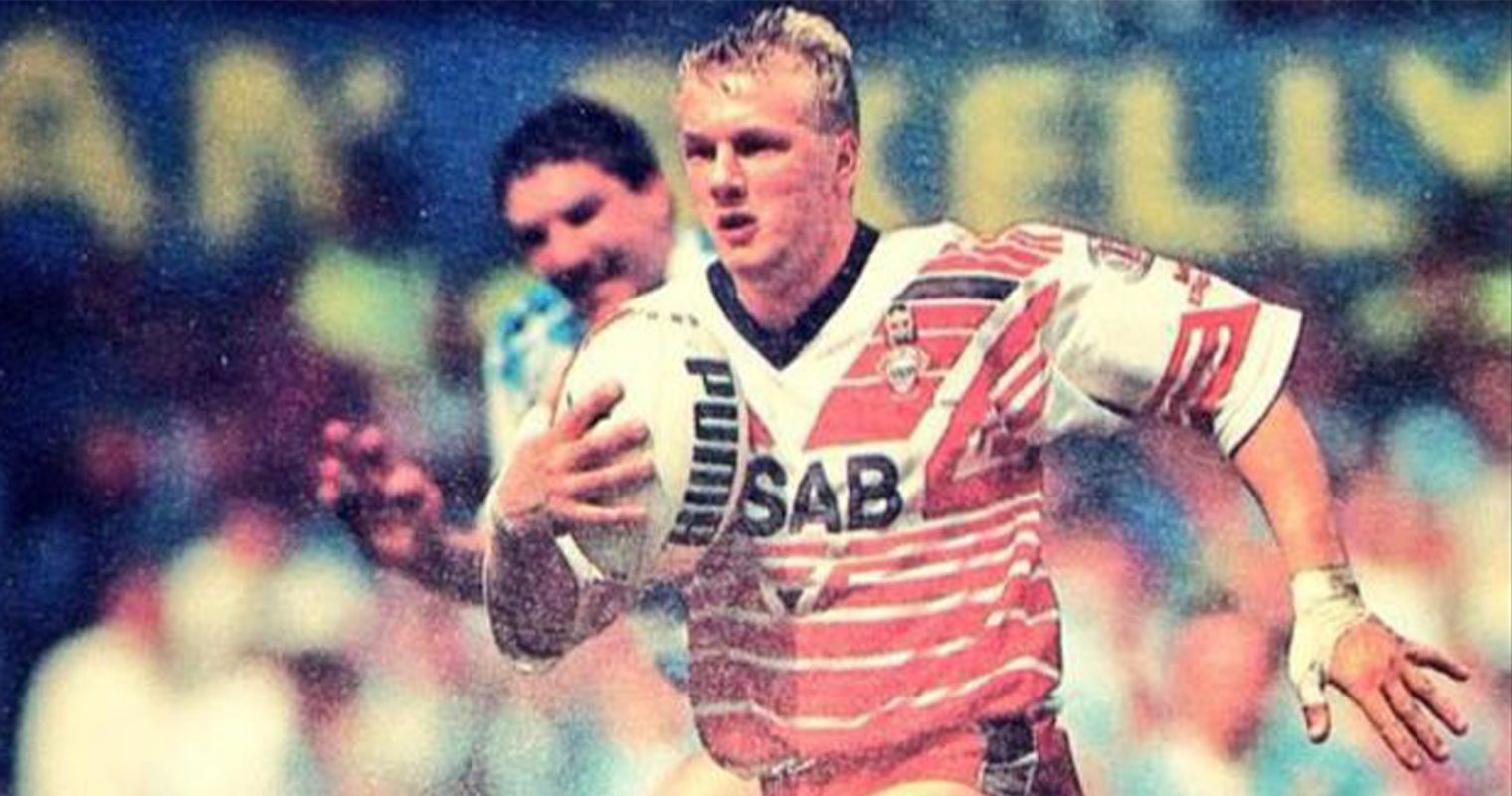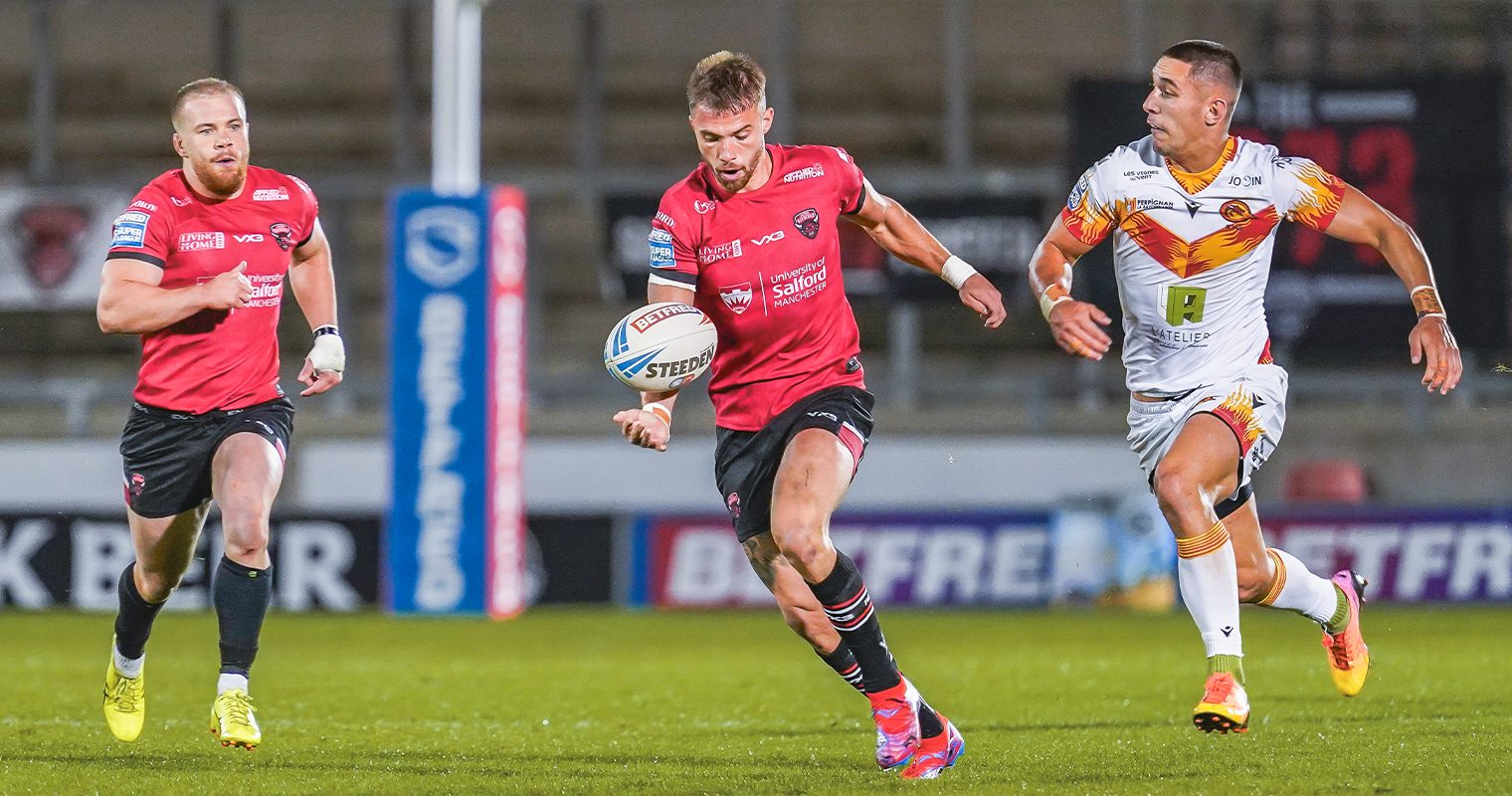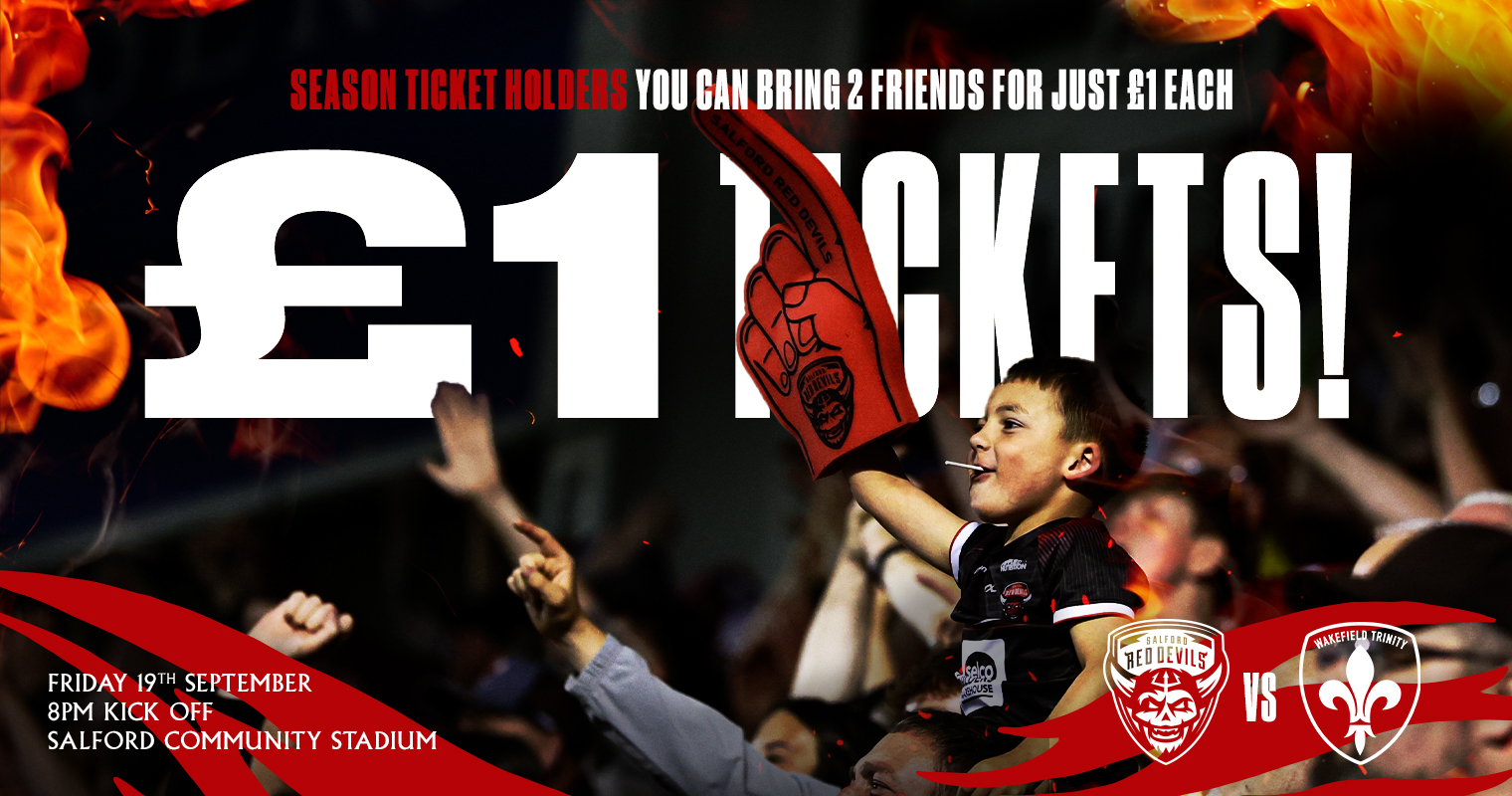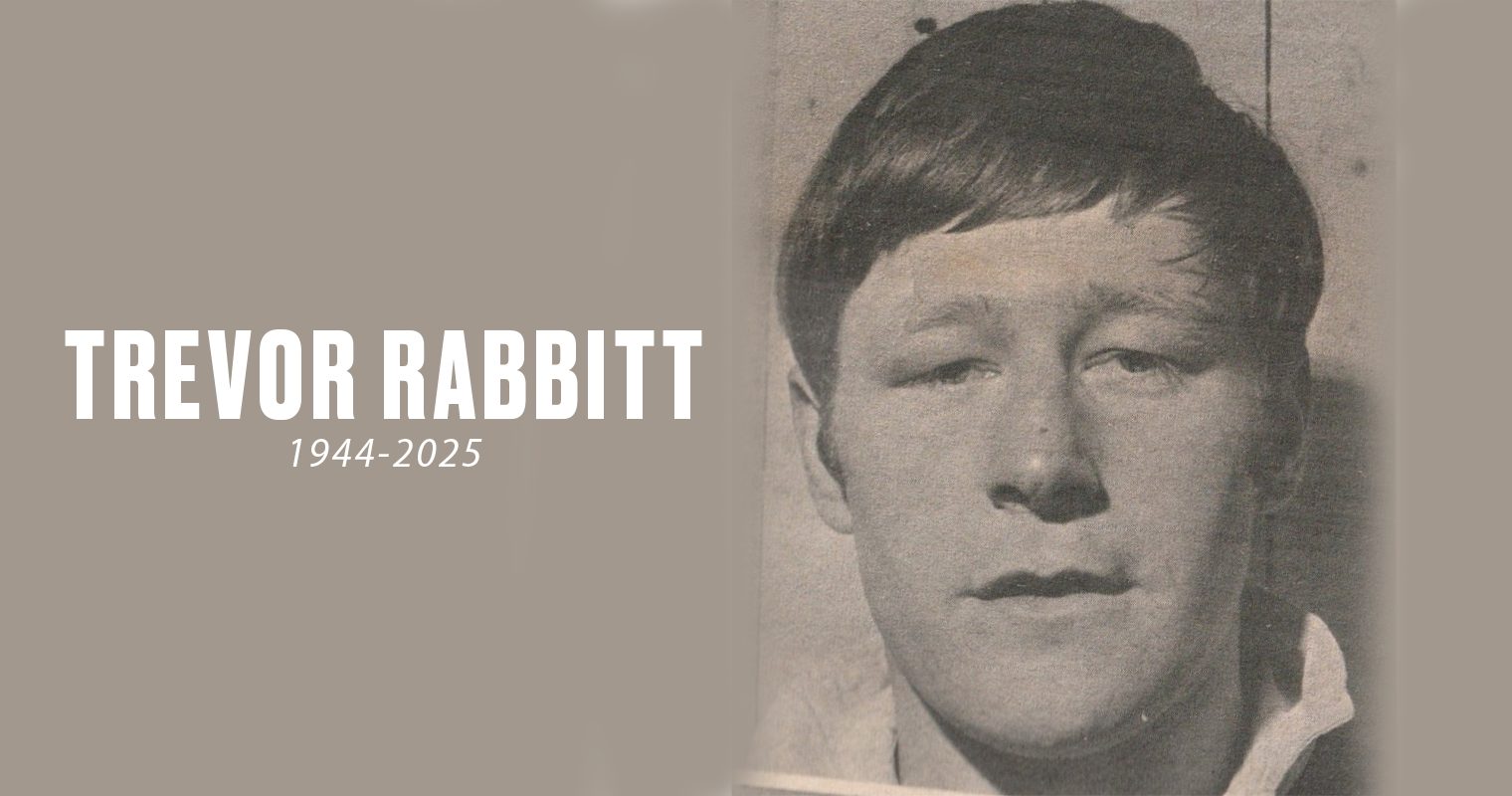Everybody connected with Salford Red Devils was totally shocked and extremely saddened to learn of the recent passing of former Salford and Wales international, Peter Banner.
Here, in tribute to one of the mainstays of that magnificent team packed full of talent, we pay tribute to Peter with this reproduction of his Rugby League Quality Street Gang 4, feature:
Born and brought up in Rochdale, Peter Banner was destined to become Salford’s first choice scrum half during the early nineteen seventies, when he, indirectly, took over from long serving captain of the team Jackie Brennan, who had held one or other of the half back positions throughout most of the sixties.
Peter had first been introduced to the game through visits to the Athletic Ground, former home to Rochdale Hornets, to which his uncle used to take him on a regular basis to watch their home games, and he started playing it himself around the age of eleven, when he graduated to Rochdale Technical School, where he played both football and rugby league for the school.
At the age of seventeen, he was approached by Hornets to turn professional, and this led to a couple of trial games against Salford ‘A’ team, but ended up with his signing for Salford having been noticed by, then, coach, Griff Jenkins, and going straight unto the ‘A’ team the following Friday evening.
That match against Swinton proved to be the fore-runner of a prolonged run in the reserves, as he became a permanent member of the team, for the rest of the season.
“I had a pretty good game, with everything going well and us winning, so I kept my place, not only for the next match, but all the remaining fixtures. It was only October, and in the days of winter rugby there were plenty of games still to be played.”
Early into the new year, 1967, and four months into his trial period, Peter was signed on a permanent basis.
“They offered me a really good deal, so I had no hesitation in accepting, and along with our fullback, Ken Gwilliam, the pair of us became fully fledged professionals.”
His first team debut was not far down the line, and when it came it turned out to be against, of all people, Rochdale Hornets, at The Willows, on 18th October 1968.
“Rochdale were a good side at that time, and despite our having home advantage, they beat us.”
Peter’s contribution on the night, however, caught the eye of the independent sponsor, and, in the days when the award was open to players from both teams and not just the home side, he was selected as Man of the Match, despite being on the losing side.
You would have expected that, as a consequence of that, he would have retained his place for several matches thereafter, but amazingly that proved not to be the case, with his being completely omitted from the side for the following week.
The one consolation was that the Salford ‘A’ team at that time was extremely strong, and so well was the team doing that attendances were rising to such an extent that they were to top the thousand mark, on a weekly basis, within a couple of seasons’ time.
“I persevered in the ‘A’ team for the rest of the season, which brought its own rewards with us winning the Lancashire Combination and the Lancashire Shield.”
In the days before the construction of the M62, ’A’ team fixtures were limited to one or other side of the Pennines, in either the Yorkshire or Lancashire leagues, but so great was the interest in the Salford ‘A’ team that an invitation was issued to Yorkshire Champions, Castleford, to play an unofficial, overall, Championship decider at The Willows, in 1971, which Salford won.
“Among the players in the side were Oldham-born prop Jimmy Hardaker, who later became ‘A’ team captain, second rower Mick Hennigan, who was soon to move to Warrington, where he became a regular in the first team, and centre Iain McCorquodale, who went on to become a prolific goal-kicking wing, with Workington Town.”
Most significant of all, however, was his stand -off half partner, with whom he was to build such a marvellous understanding, Kenny Gill
“The ‘A’ team coach, initially, was Ernie Critchley, and then in 1970 Ken Roberts took over and I had a particularly good year over that season. In two consecutive matches I scored a double hat-trick in each game.”
Not only was there a change of ‘A’ team coach, but also that season also saw a change in first team coach with the replacement of Griff Jenkins by former Swinton coach, Cliff Evans, who, unsurprisingly, was most impressed by Peter’s incredible scoring fetes.
He had also taken note of the way his half back pairing with Gill was developing, and the outcome was that early in the following season, after a rather indifferent start in the early matches, the first team pairing of Watkins and Prosser was replaced by that of Banner and Gill, on 12th February 1971, against Hull.
Two seasons later, in 1973, Peter had firmly secured his place in the starting line up in the team which was to end up as First Division Champions, and that proved to be not the only thing they were to win.
“It was a really great season. The first thing we won was the Lancashire Cup, in 1972 when we beat Swinton, 25-11, at Warrington. I scored a try under the posts, and then later on, at a crucial time in the game, Kenny and I combined to put Maurice Richards away for a long distance try.
“As he got into the clear, and then crossed the line, we turned to each other and hugged in delight and celebration, because we knew then that we had won our first trophy.”
One of Peter’s many attributes was his elusiveness when running. He might not have had the sheer speed of David Watkins, but he had his own style of footwork, which matched even the Welsh Wizard for quality. Peter, consequently, was occasionally able to turn an opposition’s defence inside out, from anywhere on the field.
One try he especially remembered was an incredible event against St Helens in the 1974/5 Floodlit Cup semi-final, no less, at The Willows, in which he wove in and out, side-stepped, jinked, and accelerated, round and past, more than half of the St Helens team.
“It was a run of seventy-five metres. I started off on my own twenty-five, on the right-hand side, and I ended up scoring between the post and the corner flag, on the left-hand side.
“My opposite number that evening, Jeff Heaton, still comments to this day that he cannot understand how I managed to get round him. The number of phone calls, and even telegrams, I got from people, was quite astonishing, but with the game having been on TV, it was seen by a large number of people.
“It was just a one off. I have scored a few special ones over my career but none of them can match that one.”
“Brian Snape was one of the very few people, at the time, who owned a video recorder, and he had made a tape of the game, so I was able to see it sometime afterwards. It did look quite amazing, and it was an important try because we ended up winning 12-8, which took us into the Final.
“We then had to play Warrington, in the Final, the following week at the Willows, which ended up a 0-0 draw, which meant we had to travel to Wilderspool a week after that, for the replay. It was a dreadful night, and the conditions really didn’t suit us, but we overcame both Warrington and the weather to lift the trophy, with a 10-5 victory.”
Out of all the trophies he won with Salford, he singles the ‘72/3 league Championship out as the greatest prize the team won. Salford had gone into the late Easter weekend with St Helens in pole position, but by the final encounters, on the Easter Monday, it had gone right down to the wire with Salford needing to win away at Wigan and Widnes to defeat Saints, at Naughton Park.
The Reds did as much as was in their own hands by overturning the Riversiders in the afternoon, and then the team, and a whole contingent of supporters, travelled over to Naughton Park, Widnes in the evening, to watch as the Chemics overcame a half-time deficit to hand the trophy to the Red Devils, for the first time since the war.
“For three years I’d ended up having to play fifty-three / fifty-four games a season; that was a real challenge. To lift that prize, at the end of it all, was a wonderful reward for us, after all the effort we had put into the season.”
During the time he stayed at Salford, Peter, in common with virtually every other member of the backline, was selected to play, initially for Lancashire, in 1972 to play against first Cumberland and then Yorkshire, and then making his Welsh international debut on 12 February 1975 for the first of a total of eight.
Peter regards the involvement of Wales in the 1975 World Cup, down under in Australia, as the pinnacle of his time at Salford.
“Being part of that World Cup was absolutely great, and having the company of Colin Dixon and David Watkins in the team made it all the more so. England, on the other hand, had Mike Coulman, Keith Fielding and Kenny Gill, and we met up in one of the early fixtures, at Land Park, Brisbane, where we beat them 12-7.
“It turned out to be the only game they lost, as they drew with Australia who won all their other matches. With the winners being determined on a league points basis, that loss against us cost England the World Cup.”
Unlike most players of his era, who stayed with Salford to the end, or very close to the end, of their careers, Peter’s came to its conclusion rather more quickly with his transfer to Featherstone Rovers, after having played his final game of one hundred and eightyfor Salford, on 31st March 1975, as part of a deal which brought Rovers’ scrum half, Steve Nash to Salford.
Twelve months later, Peter made the move across to join Leeds, where he settled extremely well, adding both the Yorkshire Cup, and Challenge Cup Winners Medals to those he had already won at Salford, making his a complete collection of English Rugby League Silverware, available at that time.
With that exceptional achievement, he moved down under to complete his playing career in Australia.
“It took me two seasons to settle down before I was on terms with the fierceness and style of the Australian game. Every game I was getting considerable vocal aggression from the opposition. By my third season, though, my fitness levels really increased thanks to the training which was so demanding, and I hit some good form.
“I was voted Best and Fairest Player in the Newcastle League’s 10 clubs, by the League’s Committee and Players from opposing teams.
“I played my last game in Coffs Harbour in 1986, thus ending a twenty-one year career made ever so rewarding by the great camaraderie of players and coaches throughout, and I was proud to have been selected as Man of the Match in my last game, just as I had been on my debut all those years ago.
“There is no doubt that Rugby League is the Greatest Game of All.”
Peter spent his later years living in Thailand, but often paid visits to the UK to see other members of his family. On such occasions he would always contact the Salford club, and invariably come to watch a game. He will be sorely missed by everyone who either knew him or saw him play.
ACKNOWLEDGEMENTS
Graham Morris, Club Historian and Author of ‘One Hundred Salford Greats’


